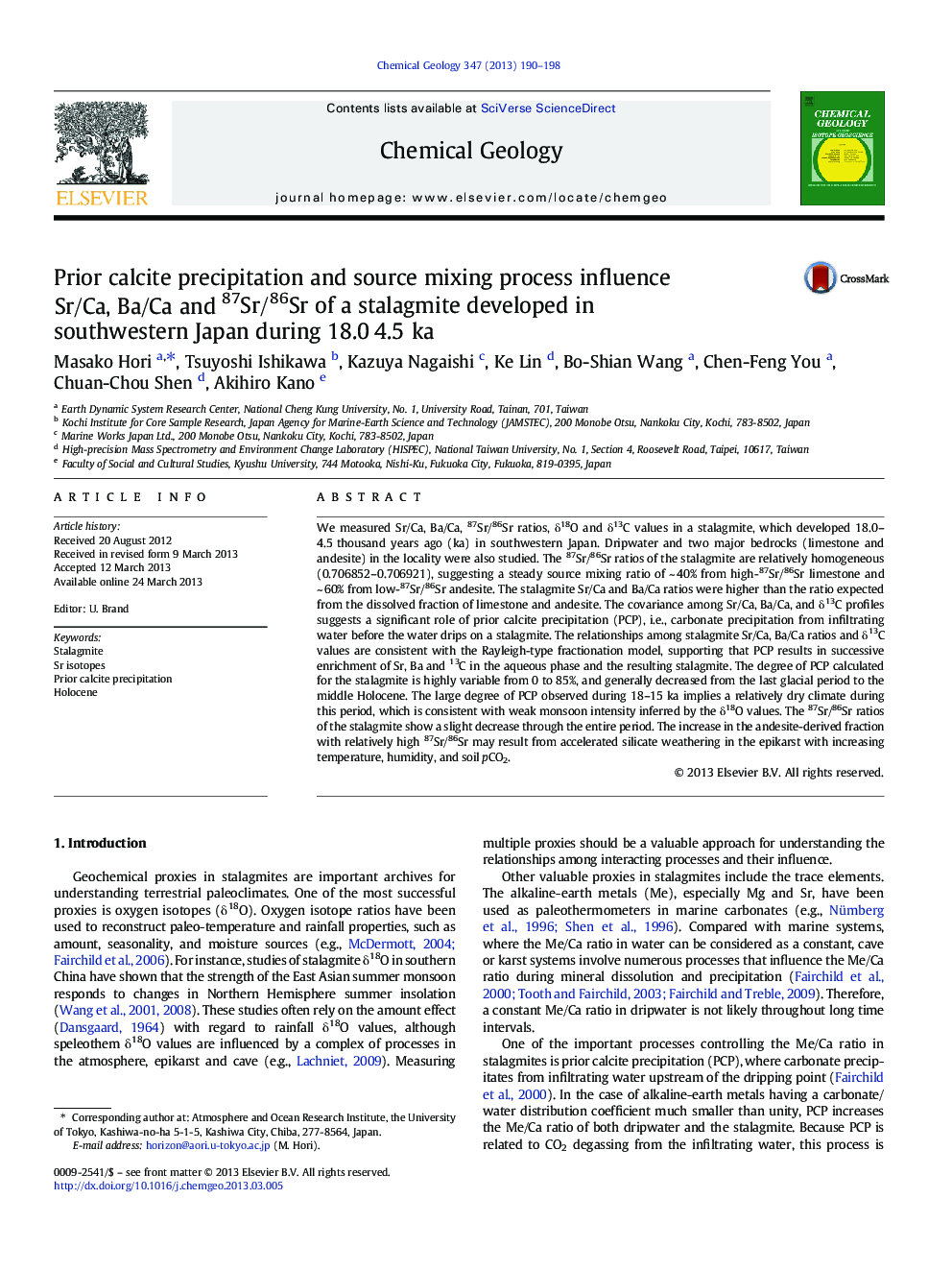| کد مقاله | کد نشریه | سال انتشار | مقاله انگلیسی | نسخه تمام متن |
|---|---|---|---|---|
| 6436969 | 1637621 | 2013 | 9 صفحه PDF | دانلود رایگان |

- Sr/Ca, Ba/Ca and Sr isotopic ratios were studied for a stalagmite from Japan.
- We calculated the degree of PCP and proportion of Sr sources.
- Prior calcite precipitation up to 80% was detected in Heinrich stadial 1.
- Sr source mixing ratio is ~Â 40% from limestone and ~Â 60% from andesite.
- Andesite-derived Sr component increased from the glacial to the middle Holocene.
We measured Sr/Ca, Ba/Ca, 87Sr/86Sr ratios, δ18O and δ13C values in a stalagmite, which developed 18.0-4.5 thousand years ago (ka) in southwestern Japan. Dripwater and two major bedrocks (limestone and andesite) in the locality were also studied. The 87Sr/86Sr ratios of the stalagmite are relatively homogeneous (0.706852-0.706921), suggesting a steady source mixing ratio of ~ 40% from high-87Sr/86Sr limestone and ~ 60% from low-87Sr/86Sr andesite. The stalagmite Sr/Ca and Ba/Ca ratios were higher than the ratio expected from the dissolved fraction of limestone and andesite. The covariance among Sr/Ca, Ba/Ca, and δ13C profiles suggests a significant role of prior calcite precipitation (PCP), i.e., carbonate precipitation from infiltrating water before the water drips on a stalagmite. The relationships among stalagmite Sr/Ca, Ba/Ca ratios and δ13C values are consistent with the Rayleigh-type fractionation model, supporting that PCP results in successive enrichment of Sr, Ba and 13C in the aqueous phase and the resulting stalagmite. The degree of PCP calculated for the stalagmite is highly variable from 0 to 85%, and generally decreased from the last glacial period to the middle Holocene. The large degree of PCP observed during 18-15 ka implies a relatively dry climate during this period, which is consistent with weak monsoon intensity inferred by the δ18O values. The 87Sr/86Sr ratios of the stalagmite show a slight decrease through the entire period. The increase in the andesite-derived fraction with relatively high 87Sr/86Sr may result from accelerated silicate weathering in the epikarst with increasing temperature, humidity, and soil pCO2.
Journal: Chemical Geology - Volume 347, 6 June 2013, Pages 190-198